A student team from the University of Colorado Boulder won the U.S. Department of Energy’s Solar Decathlon Build Challenge.
The team scored a total of 891.2 points out of a possible 1,000 awarded across 10 challenges. A design team from the University of Waterloo in Ontario, Canada, finished second with 809 points. The University of Nevada-Las Vegas took third place with 759.8 points.
The University of Colorado participated and won 1st place in the first two Solar Decathlon Build Challenges, in 2002 and 2005. The team competed for a third time in 2007.
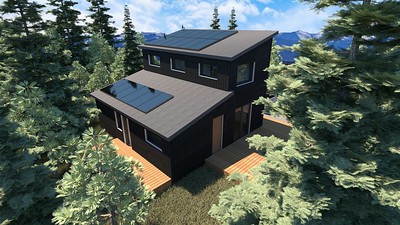
Its winning 1,200-square-foot, 2 bedroom, 3 bathroom house for this year’s competition was dubbed SPARC to signify its guiding principles of Sustainability, Performance, Attainability, Resilience, and Community.
The house includes 24 Trina solar modules with a total capacity of 7.6 kW. The house emphasizes resilience by including electrical provisions for future battery storage and grid islanding capability. It also includes a building automation system that can control the space for daily energy efficiency and achieve a grid-friendly electric demand profile as needed.
With demand response functions, the SPARC house can react to signals from the utility and reduce stress on the grid as needed. Additionally, the building envelope is made of durable materials that require minimal maintenance over time and can be repaired with relative ease.
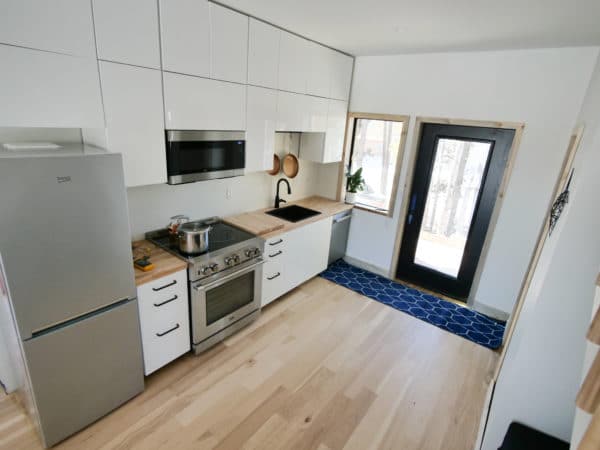
Image:Casey A. Cass/University of Colorado
The house is located in Fraser, Colorado, a mountain community west of Denver. Located near popular ski resorts, the house is intended to help provide affordable housing for who live and work in the vicinity. Affordable housing is a major challenge for many Colorado mountain towns, where both long-term and short-term housing options are geared toward out-of-town visitors.
The Colorado design team said that under normal operating conditions, the SPARC house should be able to maintain all conventional loads of available IoT devices through manufacturer provided application programming interfaces.
In demonstration mode, the energy management system was designed to schedule loads as determined by their importance in keeping the home comfortable and also by their energy consumption. Loads in the SPARC House could be shed in the following order: domestic water heater, zone air thermal loads, lighting, and auxiliary plug loads.
In addition to the University of Colorado entry, here are two other design entrants worth noting.
Affordability for first-time buyers
The University of Illinois team built a modular house that is focused on the concepts of adaptability and affordability for first-time homebuyers.
The target market is young professionals in the Urbana-Champaign area who need an affordable entry point into the housing market. Named ADAPTHAUS, the two-bedroom, one-bath, 1,200-square-foot house is intended to give residents flexible modules that can personalize the house to suit their changing needs.
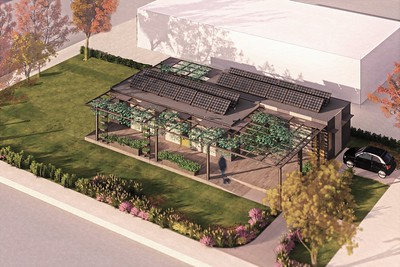
For example, the team focused on a young professional’s need for virtual communication, divisible workspaces, and convertible functions. This allows the homeowner to convert between an office space during the work week and an Airbnb space on the weekends using flexible furniture.
The design incorporates a 7.68 kW solar array with integrated storage. The owner will be able to sell back to the utility the extra energy their panels produce. Located in a lower-income neighborhood, the house’s energy-efficient measures and new technologies may serve as an example to the community, showcasing the benefits of integrating a grid-tied solar energy system.
The building’s energy system includes a grid-tied solar array that includes two-dozen 320W Mission Solar Modules, and a smart inverter that allows the user to use time-of-use arbitrage and pull from the battery storage system when grid-sourced electricity is at a premium cost.

Optimizers on each solar panel increase power generation by allowing the panels to work independently of one another. The solar panels are located on opaque areas of the roof canopy, blocking excess sunlight in the summer and allowing more sunlight in the winter. The design provides more roof space without adding to the home’s footprint.
A mobile app integrates with the building systems to offer the user energy consumption tips and graphic displays of energy consumption, while also automating home appliances.
A tankless water heater occupies less space and uses less energy. And a stormwater design allows stormwater to infiltrate on-site, helping to recharge the groundwater and support on-site vegetation, as well as easing pressure on the neighborhood’s storm drain system.
The house is being donated to Habitat for Humanity to benefit a low-income community member.
Housing for an indigenous community
The University of Waterloo Warrior Home team worked with the Chippewas of Nawash Indigenous community and Habitat for Humanity Grey Bruce to design and build the first net-zero energy Habitat for Humanity home in an indigenous community in Canada.
The Warrior Home team’s target market was the growing community of families residing in the Chippewas of Nawash First Nation territory. Partner Habitat for Humanity used many donated materials and the assistance of local volunteers for construction, helping to keep costs low to ensure affordability for the homeowners.
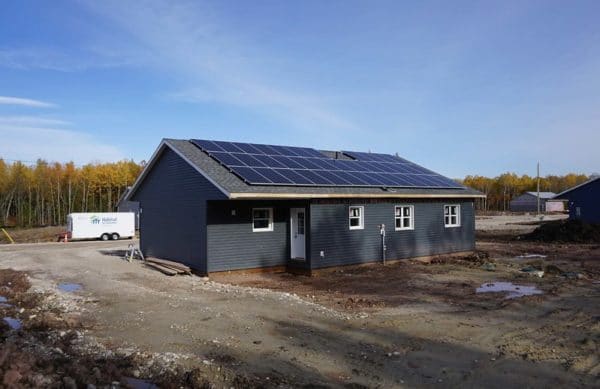
An energy-efficient building enclosure and mechanical and energy systems introduced operational cost savings. A simple design—a single-story, single-family home with a basic gable roof—minimized expensive equipment and skill, facilitating construction by volunteers.
The three-bedroom, two-bathroom, 1,560-square-foot home was designed for a growing family and features four rooms and two full bathrooms.
Chippewa values of community and connection to nature inspired the design of the Warrior Home. A covered front porch enables conversation with neighbors, while the open-concept kitchen and living space encourages gatherings with family and friends. Additionally, the Warrior Home was designed to be adaptable to the needs of a family living for generations on the Reserve. Over time, each room can be repurposed for different uses such as an office, nursing room, or bedroom for elderly occupants.
The house includes a 10.89 kW solar array made up of 33 modules each rated at 330W. Thermal control was prioritized to minimize unwanted thermal gains and losses given the area’s cold winters and hot summers. The house is designed to use 55% less energy that a similarly sized house. Smart plugs, smart thermostats, and other technologies are used to monitor and minimize energy usage.

A central heat pump coupled with a heat recovery ventilator transfers heat from the outdoors instead of using combustion or electricity, and can switch between heating and cooling modes depending on the season.
A hybrid electric water heater tank paired with a heat pump warms water using electrical resistance. The heat pump draws heat from the surrounding air and uses a compressor and refrigerant to warm the water using ambient heat.
Building enclosure innovations include raised heel trusses to create room for additional insulation; triple-glazed windows with low-emissivity coatings to reduce solar heat gains; and an insulated concrete form foundation to provide additional thermal performance.
Other university teams that competed included Weber State University in Ogden, Utah; Kansas State University; the University of Denver; Hogeschool Utrecht University of Applied Sciences, Utrecht, Netherlands; and Universidad Técnica Federico Santa María, Valparaíso, Chile.
This article was updated April 20 to reflect a number of changes due to outdated information provided by the U.S. Department of Energy. The changes include a larger design program for the University of Colorado entry and a smaller design program for the University of Illinois entry. An updated photo of the Colorado entry’s interior also has been made, along with details related to specific energy efficiency technologies.
This content is protected by copyright and may not be reused. If you want to cooperate with us and would like to reuse some of our content, please contact: editors@pv-magazine.com.
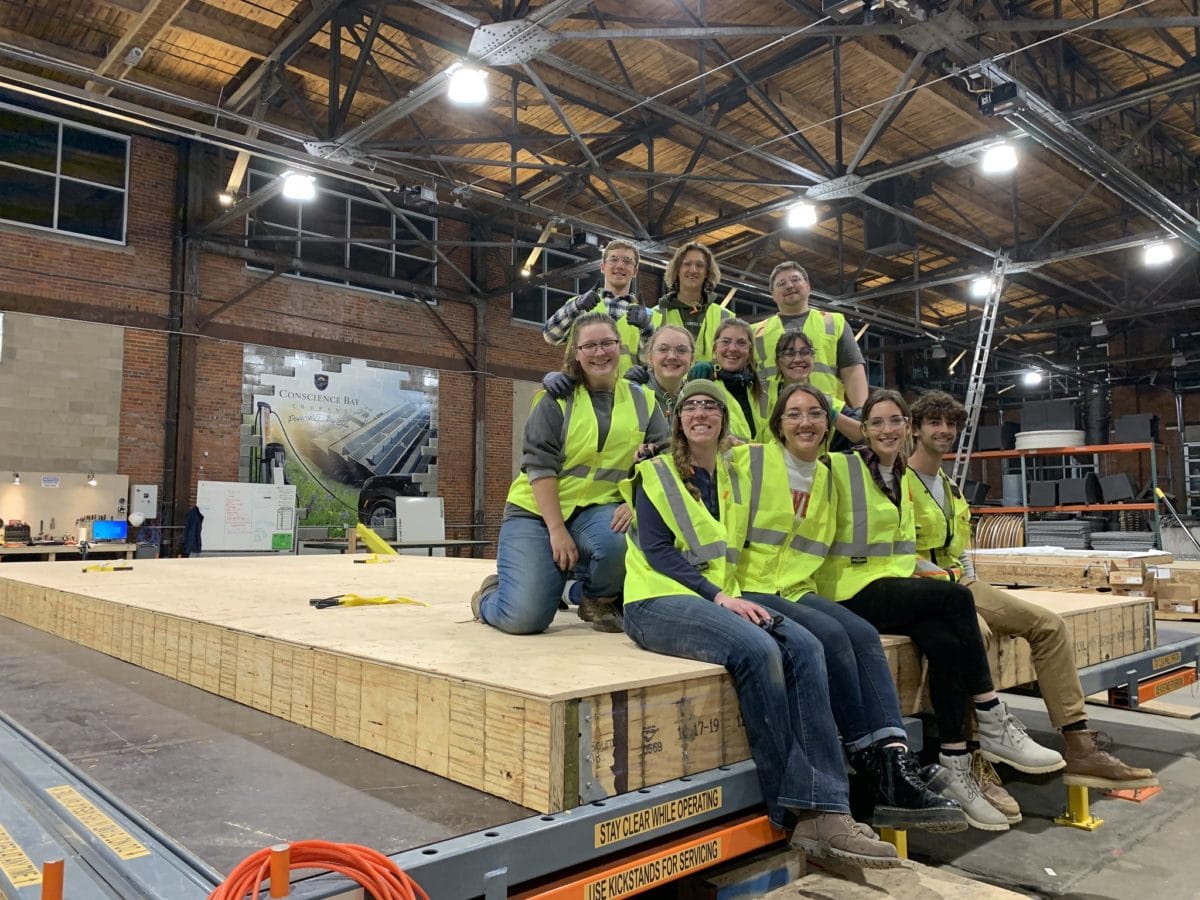








Excellent student competition! Congrats to all teams.